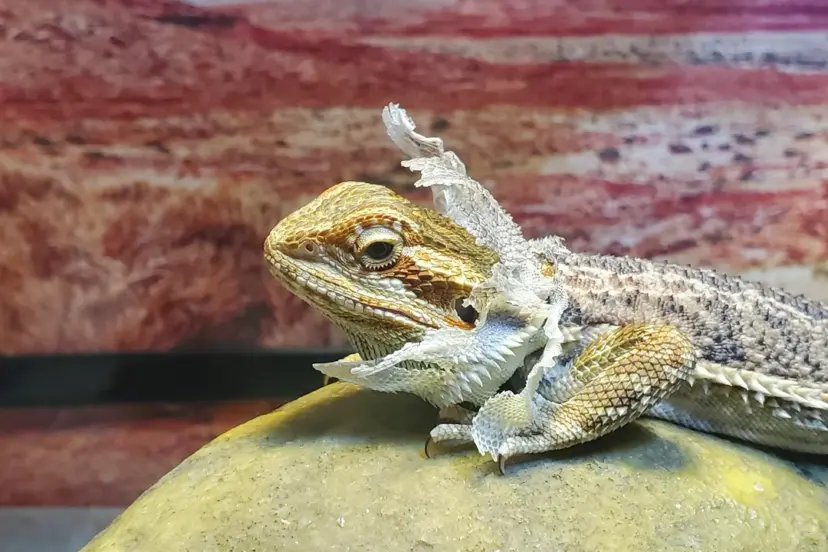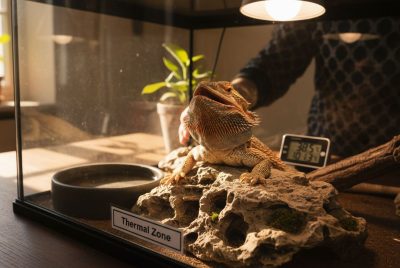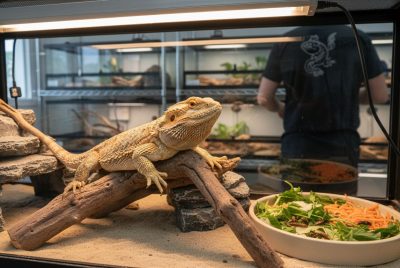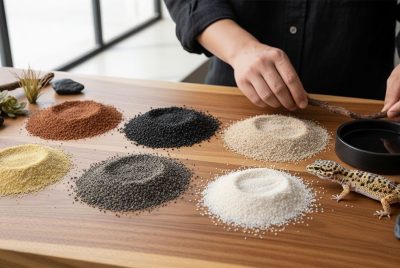Bearded Dragon Shedding Process
Shedding is a natural part of a bearded dragon’s life, helping them grow and maintain healthy skin. As a reptile enthusiast, understanding what shedding looks like and how to assist your dragon ensures they stay happy and comfortable. Let’s explore everything you need to know about bearded dragon shedding.
Why Do Bearded Dragons Shed?
Growth and Skin Renewal
Bearded dragons shed to make room for growth and renew their skin. Younger dragons grow rapidly and therefore shed more often, while adult dragons shed less frequently to maintain healthy skin.
Frequency of Shedding
Juveniles may shed every few weeks, while adults shed a few times a year. Factors like diet, hydration, and overall health influence the shedding frequency.
Signs Your Bearded Dragon is About to Shed
Dull Skin
One of the first signs is a dull or whitish appearance on their skin. This signals the old skin is preparing to come off.
Reduced Appetite
During shedding, some dragons eat less. This is normal and usually temporary.
Changes in Behavior
Your dragon might become irritable or hide more frequently. This behavior stems from discomfort associated with the shedding process.
The Shedding Process Step-by-Step
Head to Tail Shedding
Shedding starts from the head and works its way down the body. The process is natural and should not be rushed.
Timeframe
Shedding typically takes a few days to a week, depending on the dragon’s age, health, and environment.
Common Shedding Problems
Retained Shed
Skin that doesn’t fully come off, especially around toes or the tail, can restrict blood flow and cause complications.
Dry Skin
Low humidity levels often result in dry skin, making shedding harder for your dragon.
How to Assist Your Bearded Dragon During Shedding
Humidity Adjustments
Increase tank humidity to help loosen the old skin. Misting their enclosure lightly can also help.
Bathing Tips
Offer warm baths for about 15–20 minutes. The water softens the old skin, making it easier to shed.
Using Safe Tools
Never peel the skin manually! Instead, use soft cloths or shedding aids to gently address stubborn areas.
Shedding and Your Dragon’s Environment
Proper Lighting
Ensure your dragon has access to UVB and heat lamps. Proper lighting supports healthy skin and shedding.
Substrate Tips
Avoid loose substrates like sand, which can stick to shedding skin and cause irritation. Reptile carpets or tiles are better alternatives.
The Role of Nutrition in Shedding
Importance of Hydration
Proper hydration is critical during shedding. Offer fresh water and moisture-rich foods like cucumbers or watermelon.
Calcium and Vitamin D3
A balanced diet with sufficient calcium and Vitamin D3 promotes healthy skin and supports the shedding process.
Safe Handling During Shedding
When to Avoid Handling
Dragons are more sensitive during shedding, so limit handling to prevent discomfort.
Gentle Interaction
If you must handle them, avoid touching areas with peeling skin and use a soft, supportive touch.
Preventing Shedding Complications
Regular Checks
Inspect your dragon for signs of stuck shed, especially around the toes and tail.
Signs of Infections
Watch for redness, swelling, or sores, which could indicate infections and require veterinary attention.
How to Deal With Retained Shed
Removing Stuck Skin
Soak your dragon in warm water and gently rub the affected area with a damp cloth. Avoid peeling skin forcefully.
When to Seek Veterinary Help
If the retained shed persists or the area looks swollen or injured, consult a vet for assistance.
Shedding and Age Differences
Juveniles vs. Adults
Juveniles shed more often due to rapid growth, while adults shed less frequently but still require the same level of care.
Growth Spurts and Frequency
During growth spurts, young dragons may shed multiple times in a short period, demanding extra care.
Shedding in Stressful Situations
How Stress Affects Shedding
Stress from a new environment, overhandling, or changes in routine can disrupt the shedding process.
Adjusting Their Routine
Create a stable, calm environment and minimize stressors to help them shed effectively.
Misconceptions About Bearded Dragon Shedding
Debunking Myths
- Myth: Peeling the skin helps.
Fact: Peeling can harm your dragon—always let the skin fall off naturally. - Myth: All shedding is smooth and easy.
Fact: Every dragon sheds differently, and issues like retained shed are common.
Conclusion
Shedding is a vital and natural process for bearded dragons. By understanding their needs and providing proper care, you can help your dragon shed comfortably and stay healthy. Always observe their behavior, maintain a stress-free environment, and address any complications promptly. With patience and care, you’ll ensure your dragon’s shedding process goes smoothly every time.
FAQs
1. Why does my dragon shed unevenly?
Uneven shedding often results from low humidity or inadequate nutrition.
2. How can I prevent shedding issues?
Maintain proper tank conditions, offer hydration, and provide a balanced diet.
3. Should I peel my dragon’s shed?
No, let the skin fall off naturally to avoid injuries.
4. What is retained shed?
Retained shed refers to old skin that doesn’t come off completely, often on toes or tails.
5. Is frequent shedding normal?
Yes, especially for juveniles who are growing rapidly.




